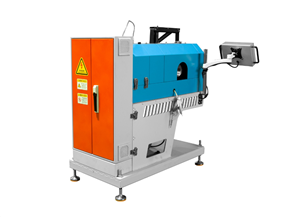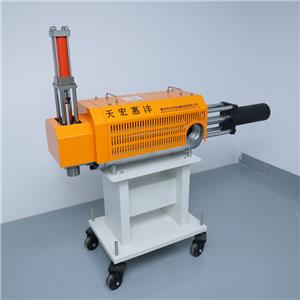Comprehensive Guide to Summer Storage of PE Pipes: Avoid Risks and Ensure Pipe Quality
In summer, with extreme heat, frequent rainfall, and intense ultraviolet radiation, storing PE (polyethylene) pipes poses no small challenge. As a commonly used plastic pipe, PE pipes boast good corrosion resistance, flexibility, and a long service life. However, improper storage can significantly compromise their performance and quality under the impact of summer's harsh environment, even affecting their subsequent use in projects. Therefore, mastering scientific and reasonable summer storage methods for PE pipes is of vital importance to ensuring the quality of the pipes and engineering safety.

Choosing a Suitable Storage Environment
1. Keep Away from High-Temperature Heat Sources
The main component of PE pipes is polyethylene, which has limited heat resistance. In summer, the ambient temperature is already high. If PE pipes are placed near high-temperature heat sources such as boilers or heating equipment, the pipes are prone to softening and deformation, and their molecular structure may be damaged, reducing their strength and toughness. Therefore, the storage site for PE pipes should be in cool and well-ventilated areas, avoiding direct sunlight and high-temperature exposure. For example, a dedicated warehouse can be built, with the warehouse roof using thermal insulation materials such as polystyrene foam boards and polyurethane foam boards, which can effectively block heat transfer and reduce the temperature inside the warehouse.
2. Maintain Dryness and Prevent Moisture
In summer, air humidity is high and rainfall is frequent. A humid environment can cause moisture to be adsorbed on the surface of PE pipes. Although PE pipes have certain water resistance, long-term exposure to a humid environment may allow moisture to penetrate into the interior of the pipes, leading to problems such as aging and mold growth, which affect their service life and connection performance. Therefore, the ground of the storage site should undergo hardened treatment and be covered with moisture-proof pads such as plastic films or rubber sheets. At the same time, the warehouse should be equipped with a good drainage system to ensure that stagnant water can be promptly drained after rainfall, preventing PE pipes from being immersed in water.
Standardizing the Stacking Method of PE Pipes
1. Controlling Stacking Height
When stacking PE pipes, the height must be strictly controlled. Excessively high stacking will cause the lower pipes to bear excessive pressure. Especially in high summer temperatures, when the pipes soften, they are prone to deformation and indentation. Generally speaking, for PE pipes with smaller diameters (such as DN50 or below), the stacking height should not exceed 1.5 meters; for those with larger diameters (such as DN110 or above), the height should not exceed 1 meter. Moreover, the number of stacking layers should be reasonably determined based on the pipe specifications and load-bearing capacity. Wooden boards or other flat materials can be used between layers to separate them, disperse pressure, and prevent mutual extrusion and deformation of the pipes.
2. Adopting the Correct Stacking Shape
To ensure the stability of stacked PE pipes, a reasonable stacking shape should be adopted. Common stacking methods include "well-shaped stacking" and "single-pipe staggered stacking". Well-shaped stacking involves stacking PE pipes horizontally and vertically in a crisscross pattern, forming a shape similar to the Chinese character "井" (well). This method can effectively enhance the stability of the stack and facilitate the access and inventory of pipes. Single-pipe staggered stacking refers to placing each pipe in a staggered manner one after another, allowing the pipes to support each other and enhance overall stability. Regardless of the method used, it is essential to ensure the pipes are stacked neatly to avoid tilting, collapsing, or other such issues.
Taking Protective Measures
1. Sun Protection Treatment
Ultraviolet rays in summer sunlight are highly damaging to PE pipes. Prolonged exposure can cause surface aging, discoloration, and deterioration of mechanical properties of the pipes. Therefore, sun protection measures for PE pipes are essential. A sun protection cloth can be covered over the surface of PE pipes; the cloth should have good UV resistance to effectively block ultraviolet penetration. Additionally, sunshade nets can be installed on the warehouse roof, with a sunshade rate of over 70%, to provide good sunshade protection for PE pipes. Moreover, if PE pipes are temporarily stored outdoors, in addition to covering them with sun protection cloth, sunshade enclosures can be set up around them to further reduce direct sunlight.
2. Wind and Rain Protection Measures
Summer sees frequent windy and rainy weather, and sudden strong winds and heavy rains may damage PE pipes. Install wind shields and rain curtains at the warehouse doors and windows to prevent wind and rain from entering the warehouse. For PE pipes stored outdoors, completely cover them with waterproof canvas, and secure the canvas with sandbags, ropes, and other tools to prevent it from being blown away. At the same time, regularly check the integrity of protective facilities and promptly repair or replace any damaged ones.
In the process of storing PE pipes in summer, a regular inspection system should be established. A comprehensive inspection of the stored PE pipes should be conducted at least once a week to check for phenomena such as deformation, aging, and mildew on the pipes, as well as to ensure that the protective facilities are in good condition. For any problems found, corresponding measures should be promptly taken to address them. For example, if slight aging is found on the surface of the pipes, a layer of anti-aging protective agent can be applied to the surface; if the protective facilities are damaged, they should be repaired or replaced immediately. In addition, the inspection results should be recorded to form complete inspection records, facilitating the tracing and analysis of problems.




